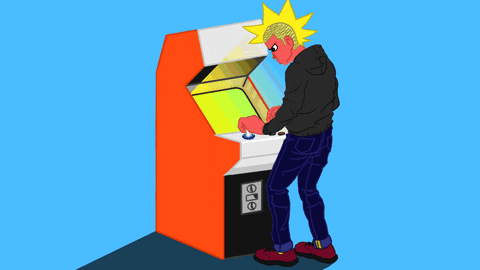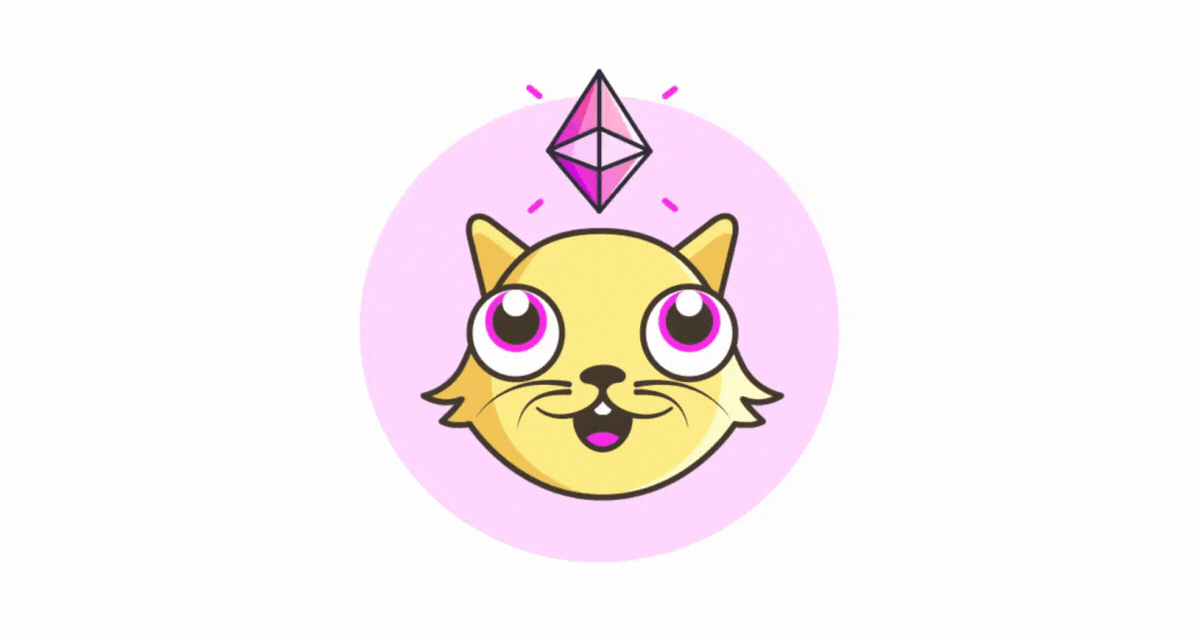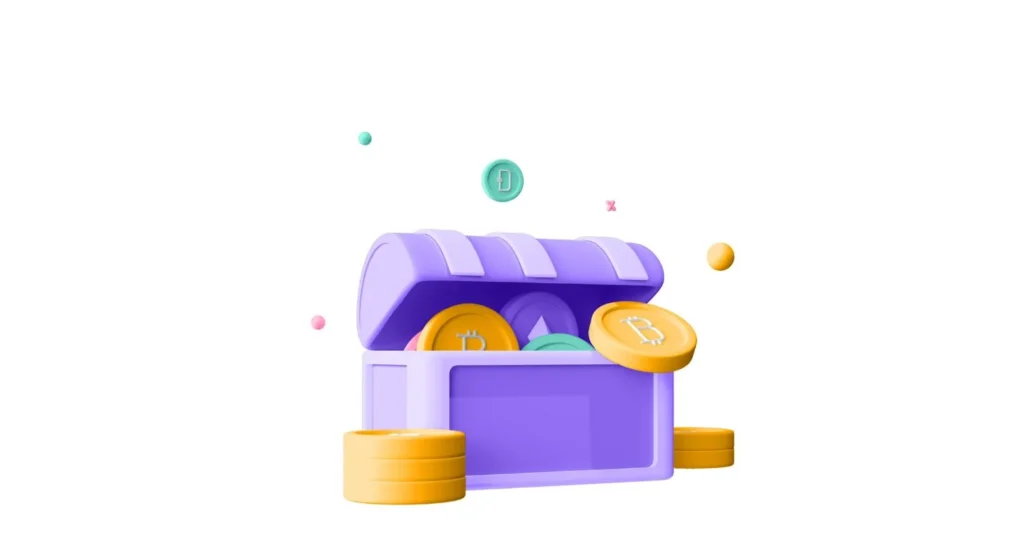You’ve sat down on your plush gaming chair. Your $3000 headphones are on, and your system is giving out that exciting whoosh sound. Your gaming avatar is donned in its expensive and premium skin. Your membership–bought weapon is ready to fire off ammo onto areny enemy that comes your way. All of it sounds so good.
Now, imagine if you did all of this but earned it while doing this thing you love so much. That’s right! Some games pay you to play. If you are an avid gamer or a game developer, you must have come across the term “Play-To-Earn”, popularly known as “P2E.”
However, if you have recently stepped into the gaming world or are thinking about getting involved in the realm of P2E, there are certain things you need to include. Well, don’t worry because this blog has you covered!
WHAT IS GAMEFI?

DeFi has been a big word this year. It has made its way into the usual way of handling finance. Now that it has made its mark on people and changed how everyone handles their finances, DeFi has also involved itself in the world of Gaming. So basically, Gaming + DeFi = GameFi.
Now, what does GameFi do? GameFi allows players to earn in-game rewards by completing certain levels, battling other users or completing specific tasks. This differs from older P2E gaming formats because players can actually use these rewards in real life. The rewards awarded to players are wider than an in-game environment. Users can transfer their game assets outside the game to trade on NFT marketplaces.
Let’s make this easier to understand. You are playing Call of Duty. Since this game is housed on a centralized server, you have no ownership over the assets you’ve collected over these years. This means that the skins, weapons, and CPs are all in the game and have no value in real life. If this game were shifted to a decentralized server, you would be able to trade or sell off these assets in NFT or Crypto Marketplaces. This would give your assets a measurable value in the real world too.
Curious about how this system works? Keep reading!
HOW DOES GAMEFI WORK?

If you are a nerd and are always intrigued by how things happen, don’t worry because you aren’t the only one! How GameFi works is easy, especially if you know a few things about the blockchain. If you want to read more about blockchain, read our blog here.
In GameFi, the reward can take the form of several assets, which may include bitcoins or in-game assets like avatars, weapons, and outfits. Each GameFi project will has its own model and game economy. Most of the in-game assets are NFTs which operate on the blockchain and can be exchanged on NFT marketplaces. However, in other circumstances, the in-game assets need to be turned into an NFT before players may trade or sell them.
While the working and economics of various GameFi projects may differ, there are a some mechanics that all P2E games have in common:
Blockchain Technology: All GameFi projects are built on the distributed ledger of a particular blockchain. This maintains track of who owns what and ensures that all transactions are visible.
Play-to-Earn Business Model: Unlike traditional Gaming, where users play to win, GameFi ventures employ a P2E business model. These games incentivize players to play and grow within the game by providing measurable incentives outside of the game. These are frequently in the form of in-game currency or NFTs.
Asset Ownership: In-game purchases are non-transferable investments trapped within a particular game in conventional Gaming. Players own their in-game tokenized assets via P2E. In most cases, they may trade them for cryptocurrencies and, eventually, fiat currency. Assets on the blockchain range from a suit of armor to a plot of virtual property.
DeFi Solutions: Most GameFi solutions may integrate sections of decentralized finance (DeFi), such as liquidity mining and yield farming. These give extra opportunities for participants to accumulate token assets.
THE TRANSITION FROM P2P TO P2E GAMES
Games were split into two significant models when it came to monetization. They were either pay-to-play or free-to-play. However, with the arrival of the play-to-earn model, gaming economics have been changed forever
PAY-TO-PLAY GAMING

From the 1970s till around 2010, peer-to-peer was the dominating paradigm. It was best defined as pay-per-play during the arcade days. Players had little control over their games unless they owned an arcade cabinet. As a result, they had to pay a tiny fee, generally 25 cents, for each round or two they played.
When home consoles first appeared in 1972, game creators realized the need to implement a new business model: single payment. Unlike pay-per-play, this new mode of payment allowed users to pay a one-time fee to receive exclusive access to a game. FIFA and Tetris are two examples.
Subscription models were launched in the late 1990s. This technique was used in Star Wars and World of Warcraft.

FREE-TO-PLAY

The free-to-play (F2P) business model allows players to access the game’s core for free but encourages them to spend money on extras such as extra lives, unlimited playing time, digital currency, customized avatars and unique cosmetics, more content, and an ad-free experience.
The bulk of early mobile games, such as Angry Birds, was built on the traditional premium model during the early days of the Apple App Store, which began in July 2008.
The App Store launched in-app purchases for free games in October 2009, allowing users to purchase digital products such as in-game cash and resources to enhance their experience. A famous example is the Battle Pass in Call of Duty.
PLAY-TO-EARN

In 2017, Ethereum released CryptoKitties, the first well-known blockchain game. Several decentralized blockchain games followed, including Ether Shrimp Farm, Ether Cartel, and Pepe Farm. These games employ a peer-to-peer economic model, which allows players to monetize their gaming time.
However, the P2E model took off in the worldwide pandemic in 2020. With many people confined to their homes owing to lockdown regulations, P2E games provided token-generating options for the typical individual.
With the advent of the metaverse, P2E games have become even more hyped in 2022.
The in-game assets are often represented as NFTs in P2E games which users can gain via accomplishing tasks and levels. These NFTs are beneficial since they can be swapped for cryptocurrency and fiat currency. Some famous examples of P2E games are Axie Infinity and Sandbox.
GETTING STARTED WITH P2E GAMING
All of this sounds pretty exciting, right? Before you venture into the world of Play-To-Earn games, you must understand how to get started with GameFi. You need to take specific steps to ensure a seamless gaming experience in these worlds.
#1 ESTABLISH A CRYPTO WALLET

A crypto wallet is required to perform in-game transactions and store the virtual currencies, and NFTs earned during gameplay. Although several wallets are accessible, such as the Crypto.com DeFi Wallet, most games require the usage of specific wallets. Visit the game’s official website to find out which wallets it supports.
#2 LINK THE WALLET TO THE GAME

Blockchain games, instead of traditional games that need a login and password, use your crypto wallet as your account. Only utilize wallets obtained from legitimate app stores that are expressly connected to the wallet’s official website to avoid fraud. Furthermore, it is advised that you use a new wallet for each game you play as an added security precaution.
#3 PUT MONEY IN YOUR WALLET

To acquire any initial products (i.e., characters or native crypto tokens) necessary to play the game, you must first pre-fund your crypto wallet with a suitable cryptocurrency.
HERE ARE SOME POPULAR P2E GAMES YOU NEED TO TRY OUT
#1 AXIE INFINITY

Axie Infinity is an NFT-based online video game developed by a Vietnamese company -Sky Mavis. It is well-known for its in-game economy that employs Ethereum-based coins.
Axie Infinity players can gather and mint NFTs which symbolize axolotl-inspired digital pets called Axies. Within the game, these monsters may be produced and pitted against one another. When players trade Axies on Sky Mavis’ marketplace, they pay a 4.25% fee.
#2 CRYPTOBLADES

Riveted Games released CryptoBlades, a breakthrough blockchain-powered NFT RPG game, on Binance Smart Chain. CryptoBlades provides its users a platform to engage in warfare and earn prizes. Winners receive SKILL tokens after defeating their opponents.
Players can recruit other characters, acquire special weapons, and retool them to increase their overall power. Players can trade their avatars and items on an open market. They can also use their SKILL tokens to bet.
#3 THE SANDBOX

The Sandbox is a virtual metaverse in which people may play, develop, own assets, and share their virtual experiences. It gives its users the tools they need to develop their own 3D games and experiences, which they can then share, rent out, or sell for tokens.
The Sandbox employs a variety of tokens to maintain a circular economy among the platform’s four sorts of users: gamers, producers, curators, and land owners. SAND, the utility token utilized across The Sandbox ecosystem; LAND, a digital piece of real estate in The Sandbox metaverse; and ASSETS, a token issued by users who contribute user-generated content, are among these tokens (UGC).
LOGGING OUT – THE FUTURE OF GAMEFI

GameFi is predicted to usher in a new gaming-age, with sales increasing 6.5 times over this year by 2025. (data from Crypto.com). It is gaining popularity and reaching a large number of people. It has the potential to attract a large number of traditional players, gamers, and even novices with no gaming experience.
The rapid adoption of this new technology is predicted to shatter all gaming industry records. This revolutionary pace also entices most gaming firms to collaborate with blockchain companies in the United States to create the most captivating GameFi idea to get a market leader.
You’ve sat down on your plush gaming chair. Your $3000 headphones are on, and your system is giving out that exciting whoosh sound. Your gaming avatar is donned in its expensive and premium skin. Your membership–bought weapon is ready to fire off ammo onto areny enemy that comes your way. All of it sounds so good.
Now, imagine if you did all of this but earned it while doing this thing you love so much. That’s right! Some games pay you to play. If you are an avid gamer or a game developer, you must have come across the term “Play-To-Earn”, popularly known as “P2E.”
However, if you have recently stepped into the gaming world or are thinking about getting involved in the realm of P2E, there are certain things you need to include. Well, don’t worry because this blog has you covered!
WHAT IS GAMEFI?

DeFi has been a big word this year. It has made its way into the usual way of handling finance. Now that it has made its mark on people and changed how everyone handles their finances, DeFi has also involved itself in the world of Gaming. So basically, Gaming + DeFi = GameFi.
Now, what does GameFi do? GameFi allows players to earn in-game rewards by completing certain levels, battling other users or completing specific tasks. This differs from older P2E gaming formats because players can actually use these rewards in real life. The rewards awarded to players are wider than an in-game environment. Users can transfer their game assets outside the game to trade on NFT marketplaces.
Let’s make this easier to understand. You are playing Call of Duty. Since this game is housed on a centralized server, you have no ownership over the assets you’ve collected over these years. This means that the skins, weapons, and CPs are all in the game and have no value in real life. If this game were shifted to a decentralized server, you would be able to trade or sell off these assets in NFT or Crypto Marketplaces. This would give your assets a measurable value in the real world too.
Curious about how this system works? Keep reading!
HOW DOES GAMEFI WORK?

If you are a nerd and are always intrigued by how things happen, don’t worry because you aren’t the only one! How GameFi works is easy, especially if you know a few things about the blockchain. If you want to read more about blockchain, read our blog here.
In GameFi, the reward can take the form of several assets, which may include bitcoins or in-game assets like avatars, weapons, and outfits. Each GameFi project will has its own model and game economy. Most of the in-game assets are NFTs which operate on the blockchain and can be exchanged on NFT marketplaces. However, in other circumstances, the in-game assets need to be turned into an NFT before players may trade or sell them.
While the working and economics of various GameFi projects may differ, there are a some mechanics that all P2E games have in common:
Blockchain Technology: All GameFi projects are built on the distributed ledger of a particular blockchain. This maintains track of who owns what and ensures that all transactions are visible.
Play-to-Earn Business Model: Unlike traditional Gaming, where users play to win, GameFi ventures employ a P2E business model. These games incentivize players to play and grow within the game by providing measurable incentives outside of the game. These are frequently in the form of in-game currency or NFTs.
Asset Ownership: In-game purchases are non-transferable investments trapped within a particular game in conventional Gaming. Players own their in-game tokenized assets via P2E. In most cases, they may trade them for cryptocurrencies and, eventually, fiat currency. Assets on the blockchain range from a suit of armor to a plot of virtual property.
DeFi Solutions: Most GameFi solutions may integrate sections of decentralized finance (DeFi), such as liquidity mining and yield farming. These give extra opportunities for participants to accumulate token assets.
THE TRANSITION FROM P2P TO P2E GAMES
Games were split into two significant models when it came to monetization. They were either pay-to-play or free-to-play. However, with the arrival of the play-to-earn model, gaming economics have been changed forever.
PAY-TO-PLAY GAMING

From the 1970s till around 2010, peer-to-peer was the dominating paradigm. It was best defined as pay-per-play during the arcade days. Players had little control over their games unless they owned an arcade cabinet. As a result, they had to pay a tiny fee, generally 25 cents, for each round or two they played.
When home consoles first appeared in 1972, game creators realized the need to implement a new business model: single payment. Unlike pay-per-play, this new mode of payment allowed users to pay a one-time fee to receive exclusive access to a game. FIFA and Tetris are two examples.
Subscription models were launched in the late 1990s. This technique was used in Star Wars and World of Warcraft.
FREE-TO-PLAY

The free-to-play (F2P) business model allows players to access the game’s core for free but encourages them to spend money on extras such as extra lives, unlimited playing time, digital currency, customized avatars and unique cosmetics, more content, and an ad-free experience.
The bulk of early mobile games, such as Angry Birds, was built on the traditional premium model during the early days of the Apple App Store, which began in July 2008.
The App Store launched in-app purchases for free games in October 2009, allowing users to purchase digital products such as in-game cash and resources to enhance their experience. A famous example is the Battle Pass in Call of Duty.
PLAY-TO-EARN

In 2017, Ethereum released CryptoKitties, the first well-known blockchain game. Several decentralized blockchain games followed, including Ether Shrimp Farm, Ether Cartel, and Pepe Farm. These games employ a peer-to-peer economic model, which allows players to monetize their gaming time.
However, the P2E model took off in the worldwide pandemic in 2020. With many people confined to their homes owing to lockdown regulations, P2E games provided token-generating options for the typical individual.
With the advent of the metaverse, P2E games have become even more hyped in 2022.
The in-game assets are often represented as NFTs in P2E games which users can gain via accomplishing tasks and levels. These NFTs are beneficial since they can be swapped for cryptocurrency and fiat currency. Some famous examples of P2E games are Axie Infinity and Sandbox.
GETTING STARTED WITH P2E GAMING
All of this sounds pretty exciting, right? Before you venture into the world of Play-To-Earn games, you must understand how to get started with GameFi. You need to take specific steps to ensure a seamless gaming experience in these worlds.
#1 ESTABLISH A CRYPTO WALLET

A crypto wallet is required to perform in-game transactions and store the virtual currencies, and NFTs earned during gameplay. Although several wallets are accessible, such as the Crypto.com DeFi Wallet, most games require the usage of specific wallets. Visit the game’s official website to find out which wallets it supports.
#2 LINK THE WALLET TO THE GAME

Blockchain games, instead of traditional games that need a login and password, use your crypto wallet as your account. Only utilize wallets obtained from legitimate app stores that are expressly connected to the wallet’s official website to avoid fraud. Furthermore, it is advised that you use a new wallet for each game you play as an added security precaution.
#3 PUT MONEY IN YOUR WALLET

To acquire any initial products (i.e., characters or native crypto tokens) necessary to play the game, you must first pre-fund your crypto wallet with a suitable cryptocurrency.
HERE ARE SOME POPULAR P2E GAMES YOU NEED TO TRY OUT
#1 AXIE INFINITY

Axie Infinity is an NFT-based online video game developed by a Vietnamese company -Sky Mavis. It is well-known for its in-game economy that employs Ethereum-based coins.
Axie Infinity players can gather and mint NFTs which symbolize axolotl-inspired digital pets called Axies. Within the game, these monsters may be produced and pitted against one another. When players trade Axies on Sky Mavis’ marketplace, they pay a 4.25% fee.
#2 CRYPTOBLADES
Axie Infinity players can gather and mint NFTs which symbolize axolotl-inspired digital pets called Axies. Within the game, these monsters may be produced and pitted against one another. When players trade Axies on Sky Mavis’ marketplace, they pay a 4.25% fee.

Riveted Games released CryptoBlades, a breakthrough blockchain-powered NFT RPG game, on Binance Smart Chain. CryptoBlades provides its users a platform to engage in warfare and earn prizes. Winners receive SKILL tokens after defeating their opponents.
Players can recruit other characters, acquire special weapons, and retool them to increase their overall power. Players can trade their avatars and items on an open market. They can also use their SKILL tokens to bet.
#3 THE SANDBOX
The Sandbox is a virtual metaverse in which people may play, develop, own assets, and share their virtual experiences. It gives its users the tools they need to develop their own 3D games and experiences, which they can then share, rent out, or sell for tokens.
The Sandbox employs a variety of tokens to maintain a circular economy among the platform’s four sorts of users: gamers, producers, curators, and land owners. SAND, the utility token utilized across The Sandbox ecosystem; LAND, a digital piece of real estate in The Sandbox metaverse; and ASSETS, a token issued by users who contribute user-generated content, are among these tokens (UGC).
LOGGING OUT – THE FUTURE OF GAMEFI
GameFi is predicted to usher in a new gaming-age, with sales increasing 6.5 times over this year by 2025. (data from Crypto.com). It is gaining popularity and reaching a large number of people. It has the potential to attract a large number of traditional players, gamers, and even novices with no gaming experience.
The rapid adoption of this new technology is predicted to shatter all gaming industry records. This revolutionary pace also entices most gaming firms to collaborate with blockchain companies in the United States to create the most captivating GameFi idea to get a market leader.











